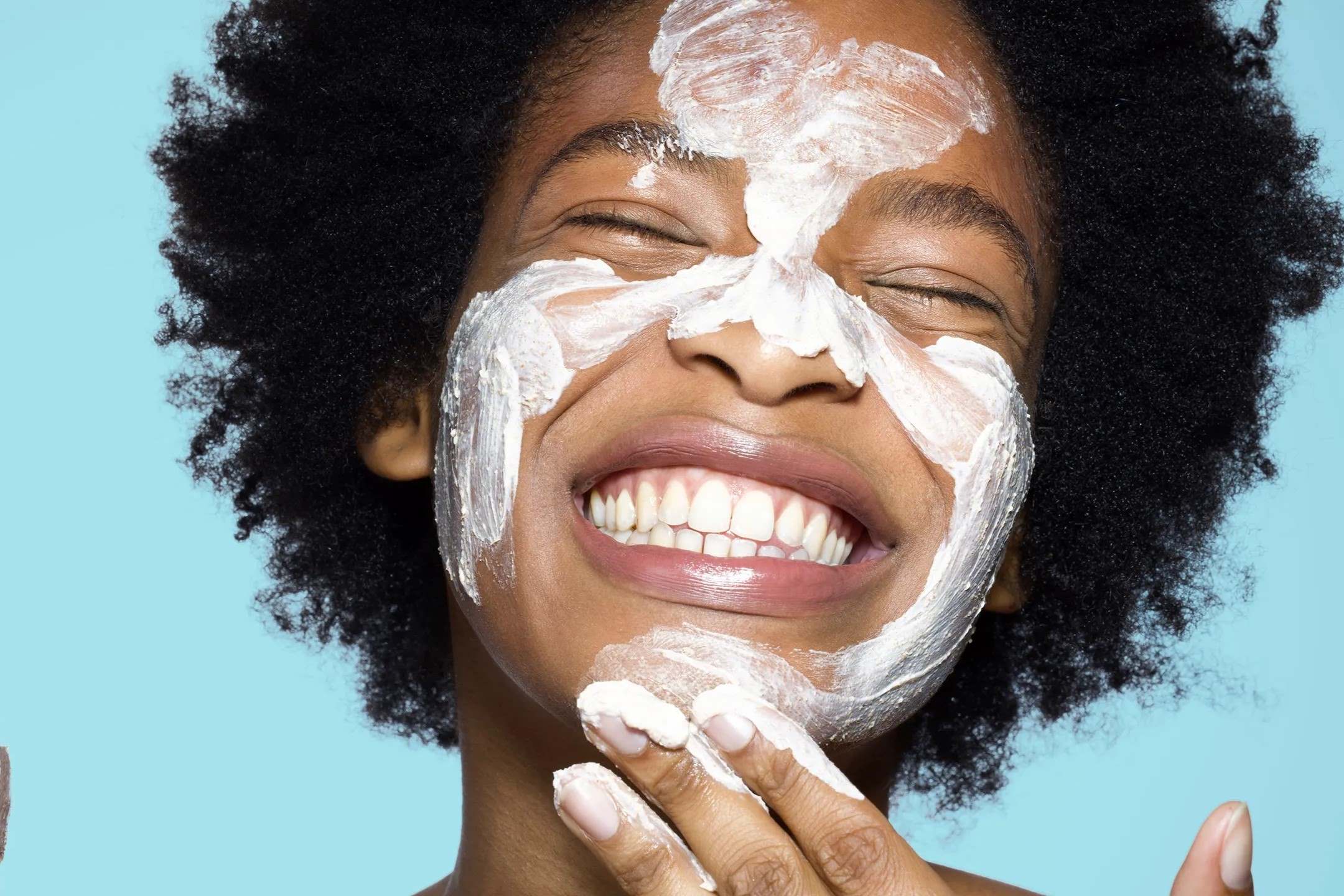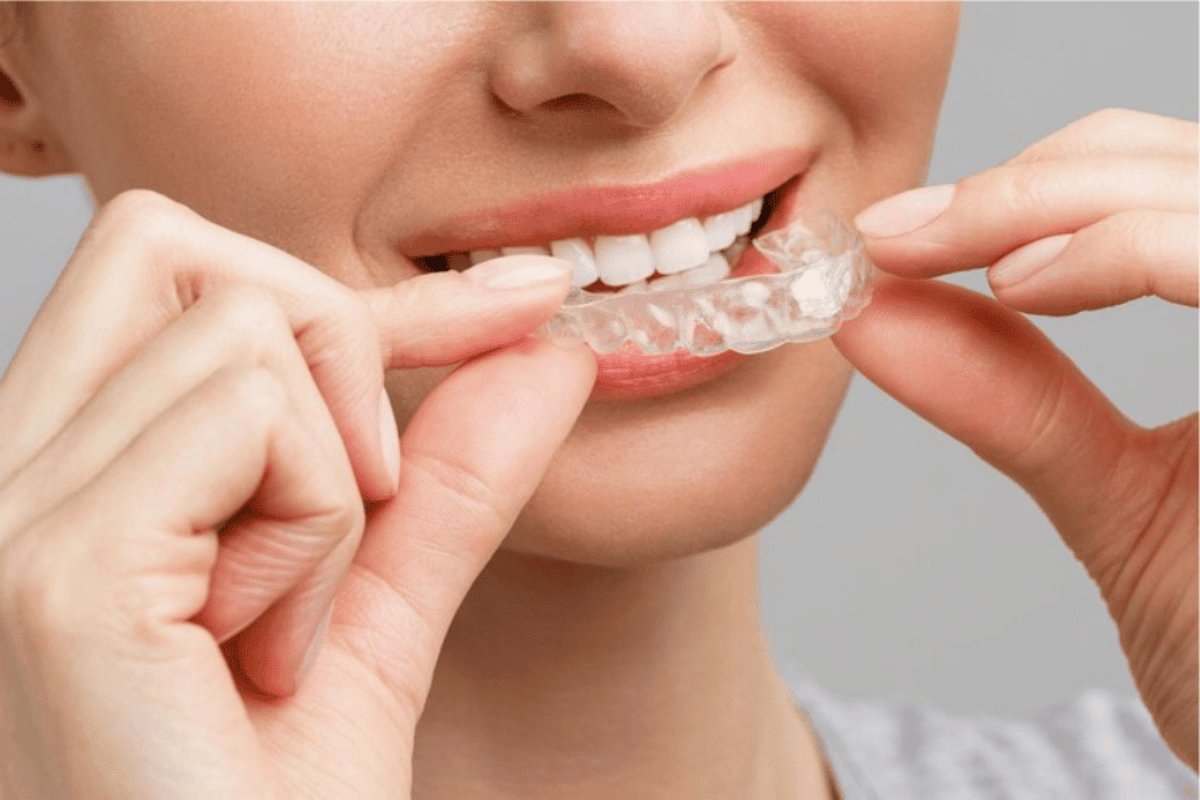Home>Health and Wellness>The Ultimate Debate: Makeup With SPF Vs. Direct Sunblock Application


Health and Wellness
The Ultimate Debate: Makeup With SPF Vs. Direct Sunblock Application
Modified: March 3, 2024
Discover the debate between makeup with SPF and direct sunblock application for your health and wellness. Learn which option offers the best protection for your skin.
(Many of the links in this article redirect to a specific reviewed product. Your purchase of these products through affiliate links helps to generate commission for Noodls.com, at no extra cost. Learn more)
Table of Contents
Introduction
The debate between using makeup with SPF and directly applying sunblock has been a topic of discussion among beauty enthusiasts and skincare aficionados for quite some time. The allure of a multifunctional product that provides coverage while offering sun protection versus the traditional method of applying a dedicated sunblock raises important questions about efficacy, convenience, and overall skincare benefits.
As individuals become increasingly aware of the damaging effects of UV radiation on the skin, the quest for the best sun protection has gained momentum. With makeup products incorporating SPF becoming more prevalent in the beauty industry, it's essential to delve into the nuances of this trend and understand how it compares to the traditional approach of applying sunblock directly.
In this article, we will explore the intricacies of makeup with SPF and direct sunblock application, shedding light on the pros and cons of each method. By examining the benefits and drawbacks of both approaches, readers will gain valuable insights to make informed decisions about their skincare routine. Whether you're a makeup aficionado, a skincare devotee, or simply someone seeking effective sun protection, this exploration aims to provide clarity on the ultimate debate: makeup with SPF versus direct sunblock application.
Understanding SPF in Makeup
Understanding the role of SPF in makeup is crucial for comprehending its effectiveness in providing sun protection. SPF, which stands for Sun Protection Factor, is a measure of a product's ability to shield the skin from the harmful effects of ultraviolet (UV) radiation. When present in makeup products, SPF serves as a protective barrier against the sun's UVA and UVB rays, which are known to cause premature aging, sunburn, and an increased risk of skin cancer.
Makeup products with SPF typically contain active ingredients, such as zinc oxide, titanium dioxide, or chemical UV filters, that work to deflect or absorb UV radiation. These ingredients form a protective layer on the skin, reducing the penetration of harmful rays and minimizing the damage caused by sun exposure. The SPF number on makeup products indicates the level of protection they offer against UVB rays, with higher numbers signifying increased protection.
It's important to note that while makeup with SPF provides some level of sun protection, it may not offer comprehensive coverage compared to dedicated sunblock products. The application of makeup is often lighter and less consistent than that of a dedicated sunblock, which can impact the overall efficacy of the SPF in makeup. Additionally, factors such as sweat, oil production, and the tendency to touch or rub the face can diminish the longevity of SPF in makeup, potentially reducing its protective capabilities over time.
Furthermore, the effectiveness of SPF in makeup is influenced by the application method and the amount of product used. Achieving the recommended level of sun protection typically requires a specific quantity of sunscreen, and it's essential to ensure that makeup with SPF is applied generously to attain the intended level of protection. Understanding these nuances is crucial for maximizing the benefits of SPF in makeup and making informed decisions about sun protection in daily beauty routines.
In essence, comprehending the function of SPF in makeup involves recognizing its potential as a convenient form of sun protection while acknowledging its limitations compared to dedicated sunblock products. By grasping the intricacies of SPF in makeup, individuals can navigate the choices available to them and make informed decisions to safeguard their skin from the sun's harmful rays.
Pros and Cons of Makeup with SPF
Makeup products with SPF offer a range of benefits that cater to the diverse needs of individuals seeking sun protection within their beauty routines. However, these products also come with certain limitations that warrant careful consideration. By examining the pros and cons of makeup with SPF, individuals can gain valuable insights to make informed decisions about integrating sun protection into their daily makeup regimen.
Pros
-
Convenience: Makeup with SPF provides the convenience of combining sun protection with cosmetic coverage, streamlining the skincare and makeup application process. This multifunctional approach appeals to individuals seeking efficiency in their beauty routines, as it eliminates the need for separate sunscreen application before makeup.
-
Daily Sun Protection: Incorporating SPF into makeup encourages consistent sun protection, especially for individuals who may be less inclined to apply sunscreen separately. This daily defense against UV radiation contributes to long-term skin health and aids in preventing sun damage and premature aging.
-
Enhanced Skin Appearance: Some makeup products with SPF offer additional skincare benefits, such as hydrating ingredients, antioxidants, or tinted formulations that provide a radiant complexion while protecting the skin from sun exposure. This dual functionality can contribute to an overall improvement in skin appearance.
-
Versatility: Makeup with SPF comes in various formulations, catering to different skin types and preferences. From lightweight tinted moisturizers to full-coverage foundations, the versatility of SPF-infused makeup allows individuals to tailor their sun protection to their specific needs and aesthetic preferences.
-
Blending Seamlessly: When properly matched to skin tone and texture, makeup with SPF can blend seamlessly into the skin, offering a natural and polished look while providing sun protection. This integration of sun protection into makeup promotes a harmonious and effortless approach to skincare and beauty routines.
Cons
-
Inadequate Sun Protection: The SPF level in makeup products may not provide sufficient sun protection, especially when applied sparingly or in thin layers. Individuals relying solely on makeup with SPF for sun protection may not achieve the recommended level of coverage, potentially leaving their skin vulnerable to UV damage.
-
Reapplication Challenges: Reapplying makeup with SPF throughout the day to maintain sun protection can be impractical and may lead to a buildup of product on the skin. This challenge arises from the need to reapply sunscreen every two hours for optimal protection, which may disrupt the makeup application and overall appearance.
-
Potential Interference with Skincare Products: The inclusion of SPF in makeup may conflict with the efficacy of other skincare products, such as moisturizers, serums, or acne treatments. This interference can impact the absorption and performance of these products, potentially compromising the overall skincare routine.
-
Limited Coverage Area: Makeup with SPF is primarily designed for facial application, leaving other exposed areas of the body unprotected. This limitation necessitates the use of additional sun protection, such as dedicated sunblock, to ensure comprehensive coverage and protection for the entire body.
-
Variable Formulations: The formulation of makeup with SPF varies across brands and products, leading to inconsistencies in sun protection, texture, and compatibility with different skin types. This variability requires careful selection and experimentation to identify products that align with individual preferences and skin needs.
By weighing the pros and cons of makeup with SPF, individuals can make informed decisions about its integration into their beauty and skincare routines. The multifaceted nature of makeup with SPF underscores the importance of understanding its benefits and limitations to optimize sun protection and promote healthy, radiant skin.
Direct Sunblock Application
Direct sunblock application involves the use of dedicated sunblock products, specifically formulated to provide effective protection against the sun's harmful UV rays. Unlike makeup with SPF, which combines sun protection with cosmetic coverage, direct sunblock application focuses solely on delivering comprehensive protection for the skin. This traditional approach to sun protection emphasizes the application of dedicated sunblock products, such as lotions, creams, sprays, or sticks, to shield the skin from UV radiation.
One of the primary advantages of direct sunblock application lies in its ability to offer targeted and reliable sun protection. Sunblock products are specifically formulated to create a protective barrier against UVA and UVB rays, helping to prevent sunburn, premature aging, and skin damage. By applying sunblock directly to exposed skin areas, individuals can ensure thorough coverage and maximize the effectiveness of the sun protection provided.
Furthermore, direct sunblock application allows for tailored protection based on individual skin types and sun exposure levels. Sunblock products come in a variety of formulations, including water-resistant, sweat-resistant, and sensitive skin-friendly options, catering to diverse preferences and needs. This versatility enables individuals to select sunblock products that align with their specific skin requirements, ensuring optimal protection and comfort.
Additionally, the practice of direct sunblock application promotes a proactive approach to sun protection, emphasizing the importance of consistent reapplication for sustained efficacy. By adhering to recommended reapplication intervals, individuals can maintain continuous sun protection throughout outdoor activities, sports, or leisure time spent in the sun. This proactive approach contributes to long-term skin health and reduces the risk of sun-induced damage.
However, despite its numerous benefits, direct sunblock application may pose challenges related to product texture, potential white cast, and the need for thorough application to achieve even coverage. Some individuals may find certain sunblock formulations to be greasy or heavy, leading to concerns about comfort and cosmetic appearance. Additionally, the presence of a white cast upon application, particularly with mineral-based sunblocks, can affect the aesthetic appeal of the skin.
In summary, direct sunblock application offers targeted and reliable sun protection, catering to individual preferences and skin needs. By understanding the nuances of this traditional approach to sun protection, individuals can make informed decisions about integrating dedicated sunblock products into their skincare routines, ultimately promoting healthy and safeguarded skin.
Benefits and Drawbacks of Direct Sunblock Application
Direct sunblock application offers a multitude of benefits that contribute to effective and reliable sun protection. By understanding these advantages, individuals can make informed decisions about incorporating dedicated sunblock products into their skincare routines.
Benefits
-
Targeted Protection: Direct sunblock application ensures focused and comprehensive protection against the sun's harmful UV rays. Sunblock products are specifically formulated to create a barrier that shields the skin from both UVA and UVB rays, reducing the risk of sunburn, premature aging, and skin damage.
-
Versatility and Tailored Protection: Sunblock products come in a diverse range of formulations, catering to various skin types and preferences. Options such as water-resistant, sweat-resistant, and sensitive skin-friendly sunblocks allow individuals to select products that align with their specific needs, ensuring optimal protection and comfort.
-
Proactive Approach: The practice of direct sunblock application emphasizes the importance of consistent reapplication for sustained efficacy. Adhering to recommended reapplication intervals enables individuals to maintain continuous sun protection during outdoor activities, sports, or leisure time spent in the sun, contributing to long-term skin health.
Drawbacks
-
Texture and Aesthetic Concerns: Some individuals may find certain sunblock formulations to be greasy or heavy, leading to concerns about comfort and cosmetic appearance. The presence of a white cast upon application, particularly with mineral-based sunblocks, can affect the aesthetic appeal of the skin, potentially impacting the overall user experience.
-
Thorough Application Requirements: Achieving even coverage with sunblock products may require thorough and meticulous application, especially for areas with hair or uneven skin texture. This process can be time-consuming and may pose challenges for individuals seeking a quick and effortless sun protection routine.
-
Potential Sensitivity and Allergic Reactions: While many sunblock products are formulated to be gentle on the skin, some individuals may experience sensitivity or allergic reactions to certain ingredients. This consideration highlights the importance of patch testing new sunblock products and being mindful of individual skin reactions.
In essence, direct sunblock application offers targeted and reliable sun protection, allowing individuals to tailor their protection based on their specific skin needs and preferences. However, potential concerns related to product texture, thorough application requirements, and skin sensitivity underscore the importance of understanding the nuances of this traditional approach to sun protection. By weighing these benefits and drawbacks, individuals can make informed decisions about integrating dedicated sunblock products into their skincare routines, ultimately promoting healthy and safeguarded skin.
The Ultimate Decision: Makeup with SPF vs. Direct Sunblock Application
When it comes to choosing between makeup with SPF and direct sunblock application, individuals are faced with a critical decision that directly impacts their skincare and sun protection routines. The debate revolves around the convenience and multifunctionality of makeup with SPF versus the targeted and reliable protection offered by dedicated sunblock products. Understanding the nuances of each approach is essential for making an informed decision that aligns with individual preferences, lifestyle, and skincare needs.
Makeup with SPF presents an enticing proposition, offering the convenience of combining sun protection with cosmetic coverage. This multifunctional approach streamlines the beauty routine, eliminating the need for separate sunscreen application before makeup. Additionally, makeup with SPF encourages consistent sun protection, catering to individuals who may be less inclined to apply sunscreen separately. The integration of SPF into makeup also holds the potential to enhance skin appearance, providing additional skincare benefits and versatility in formulations. However, the limitations of makeup with SPF, such as inadequate sun protection, reapplication challenges, and potential interference with other skincare products, warrant careful consideration.
On the other hand, direct sunblock application emphasizes targeted and reliable sun protection, catering to individual skin types and preferences. The versatility of sunblock products allows for tailored protection, ensuring optimal coverage and comfort. This proactive approach to sun protection, coupled with the ability to select sunblock products that align with specific needs, contributes to long-term skin health. However, concerns related to product texture, thorough application requirements, and potential sensitivity and allergic reactions underscore the need for careful evaluation.
The ultimate decision between makeup with SPF and direct sunblock application hinges on striking a balance between convenience and comprehensive protection. Individuals seeking a streamlined beauty routine and multifunctional sun protection may find makeup with SPF appealing, provided they are mindful of its limitations and reapplication challenges. Conversely, those prioritizing targeted and reliable sun protection, tailored to their specific skin needs, may opt for direct sunblock application, recognizing the importance of thorough application and potential aesthetic concerns.
Ultimately, the decision rests on individual preferences, lifestyle factors, and the desire for effective sun protection. By weighing the benefits and drawbacks of each approach, individuals can make an informed decision that aligns with their skincare goals, promoting healthy, radiant, and safeguarded skin.
Conclusion
In the realm of skincare and sun protection, the debate between makeup with SPF and direct sunblock application reflects the diverse needs and preferences of individuals seeking to safeguard their skin from the sun's harmful rays. As the beauty industry continues to evolve, offering multifunctional products that combine sun protection with cosmetic coverage, the allure of makeup with SPF has captured the attention of beauty enthusiasts and skincare devotees alike. However, the traditional approach of direct sunblock application remains a steadfast pillar in the realm of sun protection, emphasizing targeted and reliable defense against UV radiation.
Ultimately, the decision between makeup with SPF and direct sunblock application hinges on a delicate balance of convenience, efficacy, and individual skincare needs. Makeup with SPF presents an appealing proposition, offering the seamless integration of sun protection into the beauty routine and catering to individuals seeking multifunctional products. The convenience and daily sun protection offered by makeup with SPF resonate with those looking for an efficient and streamlined approach to skincare. However, the potential limitations, such as inadequate sun protection and reapplication challenges, underscore the need for careful consideration.
On the other hand, direct sunblock application champions the principles of targeted and reliable sun protection, allowing individuals to tailor their defense against UV rays based on their specific skin needs and preferences. The versatility of sunblock products and the proactive approach to sun protection underscore the commitment to long-term skin health. Yet, concerns related to product texture, thorough application requirements, and potential aesthetic considerations highlight the importance of informed decision-making.
In navigating the ultimate decision, individuals are encouraged to evaluate their skincare goals, lifestyle factors, and the desired balance between convenience and comprehensive protection. By weighing the benefits and drawbacks of makeup with SPF and direct sunblock application, individuals can make informed choices that align with their unique needs, ultimately promoting healthy, radiant, and safeguarded skin.
As the beauty and skincare landscape continues to evolve, the debate between makeup with SPF and direct sunblock application serves as a reminder of the diverse approaches available to individuals seeking effective sun protection. Whether integrating multifunctional products into their beauty routines or adhering to the targeted defense offered by dedicated sunblock, individuals hold the power to make informed decisions that prioritize the health and well-being of their skin.













